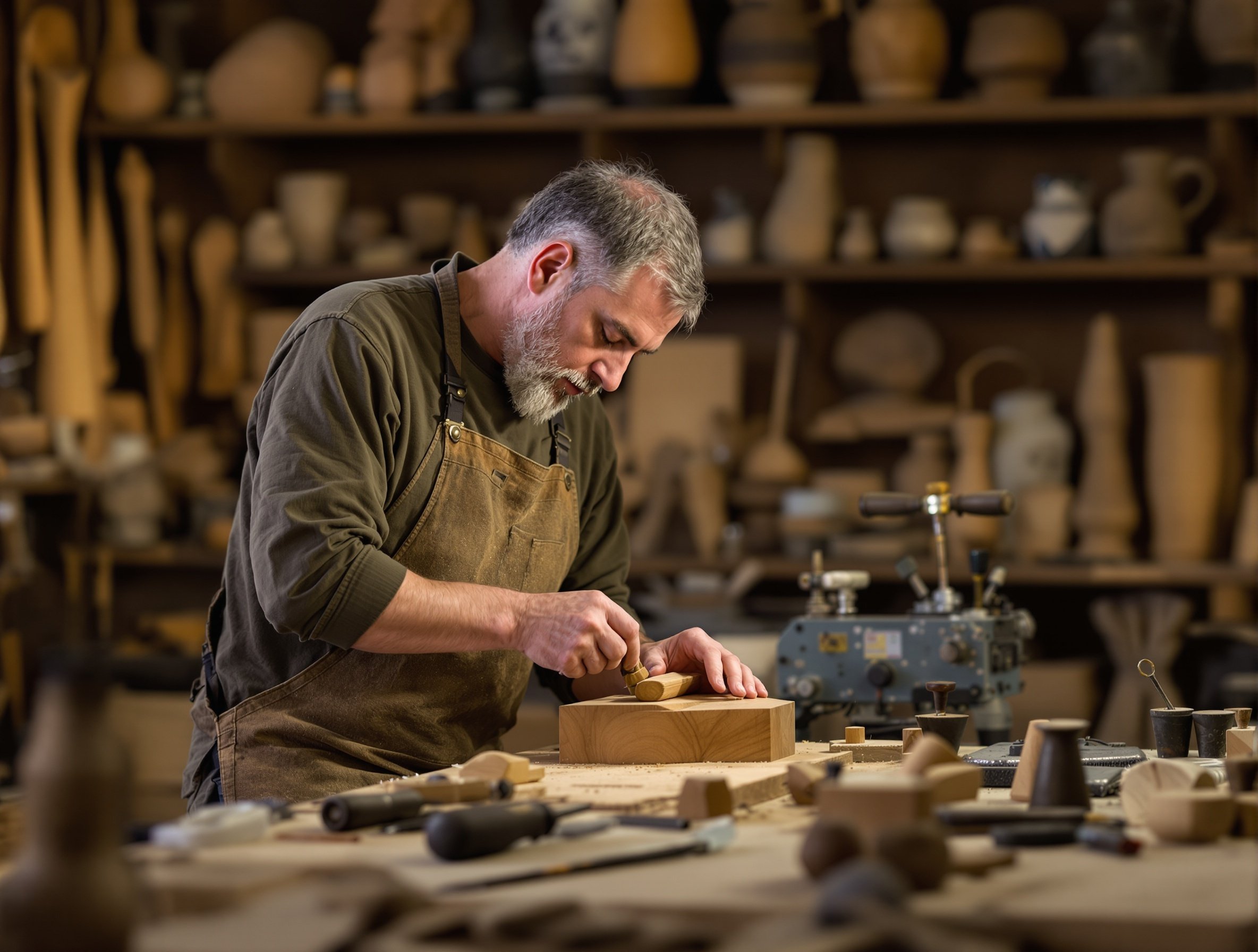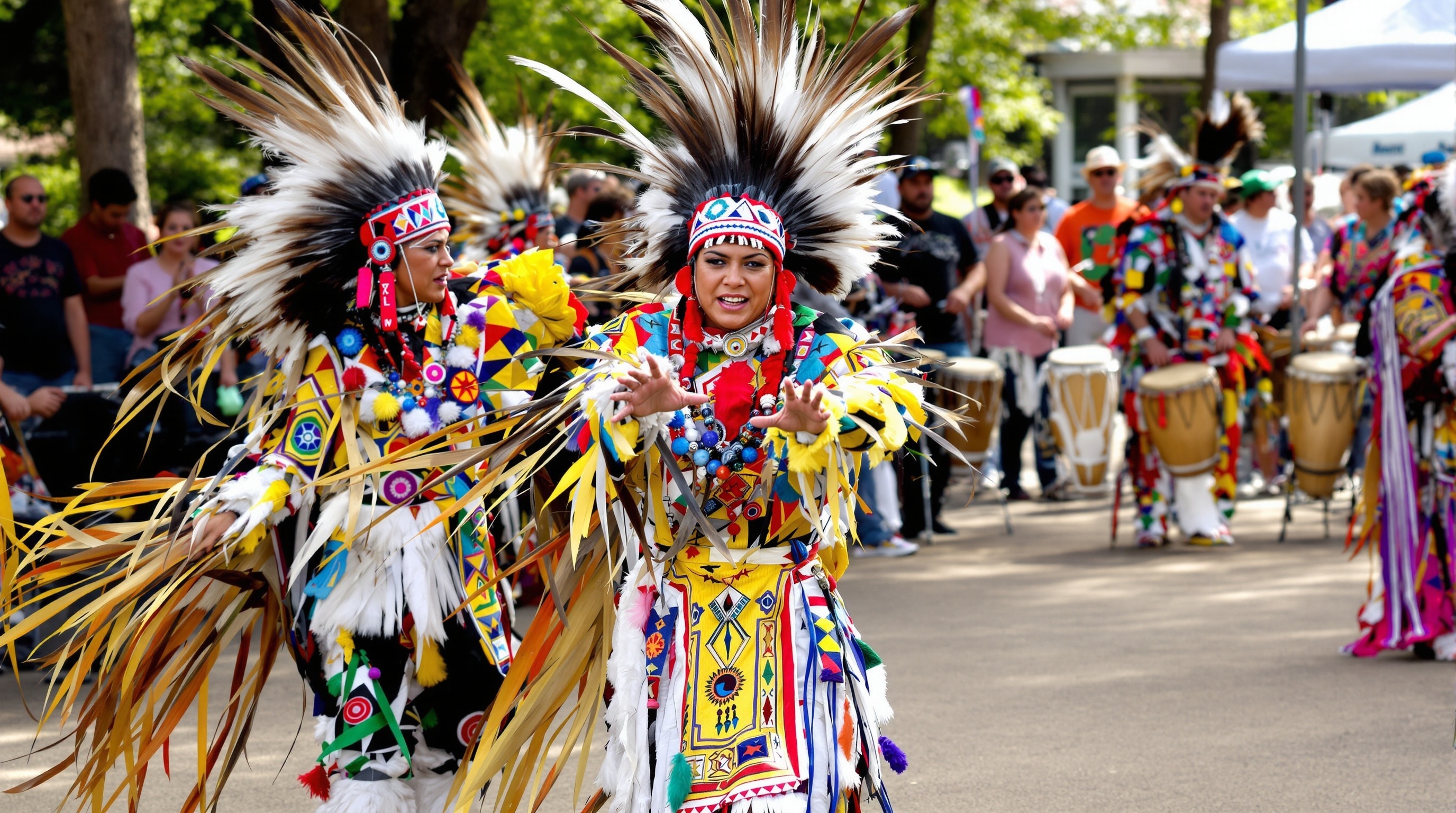Artisan Crafts: Preserving Canadian Heritage Through Skilled Hands
Meet the craftspeople keeping traditional Canadian arts alive, from woodworking to textile arts, each piece telling a story of heritage, skill, and cultural continuity. These artisans bridge past and present, ensuring ancient techniques survive in the modern world.

In workshops across Canada, skilled artisans continue traditions that span generations. These craftspeople represent living bridges to our cultural past, maintaining techniques, tools, and knowledge that machine production cannot replicate. Their work preserves not just objects, but entire ways of understanding materials, process, and the profound satisfaction of creating something beautiful with your hands.
The Master Woodworkers
In Timmins, Ontario, Robert Leblanc operates from the same workshop his grandfather established in 1923. Three generations of Leblancs have crafted furniture, canoe paddles, and architectural details using traditional joinery techniques that require no nails or screws—only precise cuts, careful fitting, and deep understanding of wood grain.
"Modern tools make the work faster, but they don't make it better," Robert explains while shaping a maple table leg with a spokeshave his grandfather made by hand. "The wood still needs to be read, respected, coaxed into its final form. That relationship between craftsman and material—that's what machines can't replicate."
Robert's workshop contains tools spanning a century of Canadian woodworking. Hand planes made by Maritime toolmakers, drawknives forged by prairie blacksmiths, chisels whose handles have been shaped by decades of use. Each tool carries forward not just function, but the accumulated wisdom of previous craftsmen.
"When you hold a tool that your grandfather used, you're not just holding steel and wood—you're holding memory, technique, and the accumulated knowledge of everyone who used that tool before you. It teaches you patience, respect, and precision." — Robert Leblanc, Third-generation woodworker
Textile Traditions: Weaving Stories
At the Olds College Fibre Week in Alberta, traditional textile arts find new life through dedicated practitioners. Mary Rostrup, a master weaver from Norwegian heritage, teaches complex color-work techniques that her great-grandmother brought from Scandinavia to the Canadian prairies.
"Each pattern tells a story," Mary explains while demonstrating traditional Fair Isle knitting. "These designs weren't just decoration—they identified families, regions, even individual knitters. When I teach these patterns to young people, I'm passing along a visual language that's thousands of years old."
The college's annual gathering brings together spinners, weavers, dyers, and knitters from across western Canada. Participants learn everything from raising sheep to creating natural dyes from indigenous plants. The program represents a comprehensive approach to textile arts that honors both traditional methods and contemporary innovation.
Indigenous Crafts: Cultural Continuity
In Wendake, Quebec, master craftsman Paul Sioui creates traditional birchbark canoes using techniques unchanged for centuries. Each canoe requires finding the right trees, harvesting bark at the precise seasonal moment, and shaping the vessel using only traditional materials and methods.
"This isn't just craft—it's cultural preservation," Paul emphasizes while carefully stitching bark panels with spruce root thread. "Every canoe carries forward knowledge about materials, seasons, water, and the relationship between humans and the natural world. When young people learn these techniques, they're learning a way of seeing and understanding that goes far beyond making boats."
Paul's workshop offers intensive programs for Indigenous youth, ensuring traditional knowledge transfers to new generations. Participants don't just learn construction techniques—they learn to read landscapes, understand seasonal cycles, and maintain relationships with the natural materials their ancestors used for millennia.
Metalwork and Blacksmithing
The ring of hammer on anvil still echoes in workshops across Canada, where traditional blacksmiths maintain skills that built the country. At the Ontario Artist Blacksmith Association, craftspeople create everything from historical reproductions to contemporary architectural ironwork.
Master blacksmith Karen Thompson operates a forge near Perth, Ontario, where she creates hand-forged hardware for heritage building restoration projects. "Modern manufacturing can't reproduce the subtle variations and character marks that define hand-forged ironwork," she notes while drawing out a piece of hot steel. "Each piece bears the mark of fire, hammer, and human decision-making that gives it life."
Karen's apprentices learn not just technique, but the entire ecosystem of traditional metalwork—reading fire, understanding steel behavior, maintaining tools, and developing the physical rhythm that allows blacksmiths to work efficiently and safely at the forge.
Pottery and Ceramics
In the Kootenay region of British Columbia, potter Janet Morrison works with local clays to create functional ceramics that reflect both regional materials and traditional forming techniques. Her pottery incorporates ash glazes made from wood fired in her own kiln, creating pieces that are literally rooted in the landscape.
"Industrial ceramics are consistent and predictable," Janet explains while centering clay on her wheel. "But handmade pottery carries the mark of process—slight variations in thickness, glaze patterns that emerge from fire, forms that show the maker's hand. These irregularities aren't flaws; they're evidence of human participation in creation."
Janet's work represents a broader movement among Canadian potters to develop distinctly regional ceramic traditions that reflect local materials, firing methods, and cultural influences.
Musical Instrument Making
Violin maker Jean-Claude LarrivГ©e operates from a workshop in Victoria, BC, where he creates instruments that compete with the finest European examples. His violins, violas, and cellos require months of careful work, from selecting and aging wood to applying dozens of thin varnish coats that will mature over decades of playing.
"A musical instrument is a collaboration between maker, player, and time," Jean-Claude observes while carving a violin top. "The wood continues changing for years after completion. The musician's playing style shapes the instrument's voice. My job is to create the foundation for that ongoing relationship."
Jean-Claude's instruments are played by musicians across Canada and internationally, carrying forward both European luthiery traditions and distinctly Canadian approaches to wood selection and finishing.
The Economics of Artisan Work
Traditional crafts face economic challenges in a mass-production world. Handmade goods require significant time investment and skilled labor, making them more expensive than factory alternatives. However, growing appreciation for craftsmanship, sustainability, and cultural preservation creates markets for artisan work.
"People are rediscovering the value of objects made to last generations rather than seasons," notes craft marketing consultant Sarah Chen from Toronto. "Handmade goods offer connection to makers, materials, and processes that mass production eliminates. That relationship between maker and user creates value beyond simple function."
Teaching Traditional Skills
Across Canada, institutions and individual artisans work to transfer traditional knowledge to new generations. Programs range from weekend workshops to multi-year apprenticeships that provide comprehensive skill development.
The New Brunswick Community College offers a traditional building crafts program that teaches heritage construction techniques—timber framing, stone masonry, traditional plastering, and heritage roofing methods. Graduates work on restoration projects that maintain Canada's built heritage using historically appropriate materials and methods.
"These skills were nearly lost a generation ago," explains program coordinator David MacDonald. "Now we have young people learning techniques that were common knowledge for centuries. They're becoming the bridge between historical methods and contemporary preservation needs."
Innovation Within Tradition
Contemporary artisans don't simply reproduce historical work—they adapt traditional techniques to address current needs and aesthetic preferences. This innovation within tradition keeps crafts alive and relevant while maintaining core principles and methods.
Furniture maker Lisa Wang in Vancouver combines traditional Japanese joinery with contemporary Canadian design aesthetics, creating pieces that honor both cultural traditions while serving modern lifestyles. Her work demonstrates how traditional techniques can evolve without losing their essential character.
The Future of Canadian Crafts
Digital technology presents both challenges and opportunities for traditional crafts. While online marketing helps artisans reach broader audiences, social media's emphasis on quick consumption conflicts with the slow, careful processes that define quality craftsmanship.
However, growing environmental awareness and desire for authentic experiences create opportunities for traditional crafts that emphasize durability, repairability, and connection to cultural heritage.
Canadian artisans continue demonstrating that handmade objects carry irreplaceable value—not just as functional items, but as carriers of cultural knowledge, human skill, and the profound satisfaction that comes from creating beauty through traditional methods.
In a world increasingly dominated by digital experiences and mass production, these craftspeople maintain essential connections to materials, processes, and the patient development of skill that defines true mastery. Their work ensures that traditional knowledge survives not as museum artifacts, but as living practices that continue evolving while honoring their historical roots.


